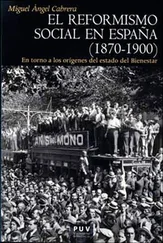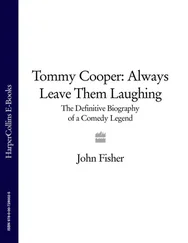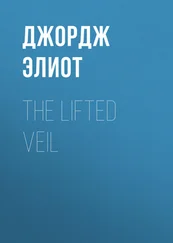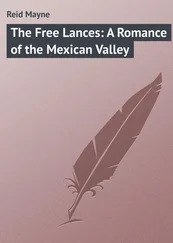Contemporary Mormon literature and modern criticism unveil a frenzied flurry of activity that promises favorable prospects for the future. Mormon literary criticism should avoid tending towards dichotomies and separation. It should propose a wider range of critical awareness, one that embraces different levels of commitment to the Church or different propositions of understanding about what being Mormon is. In fact, Mormon literature aspires to visibility, and that is still a work in process. National, and international, visibility still remains a challenge, even though many different writers have attained a commercial success that anticipates the potential to germinate in foreign soil that Mormon literature possesses. Mormon literary criticism is a key element to this evolution. The research and reviews being made by scholars will help to frame and substantiate the progress of Mormon literature.
Prospects and Academia:
The Limits of Mormon Literature
The goal of this book could (and should) not be to resolve any debate within Mormonism. I envision this project as an opportunity to adopt the widest perspective in an attempt to encompass “a broader range of attitudes and practices.” This method reduces the tendency to consider Mormon literature according to any essentialist criterion. It is not only the content but the literary quality of Mormon literature that must be considered in this brief introduction: “the literary merit of a work is independent of whether it falls within the realm of Mormon literature or some other literary classification” (Seshachari 25). This explains why a few authors who could have been included on my list of Mormon writers—even if it is not my aim to be sententious—were omitted. Obviously, these other omitted writers would be essential if I was approaching this topic from a strictly Mormon perspective, but my perspective is literary. At the same time, by bearing in mind the nature of Mormon culture, I am able to observe the relevance of some works that might fall outside a canon validated by certain literary patterns. Thus, although I do not underestimate the influence of faith and culture, the literary quality of the texts have prevailed over the significance of their contribution to Mormonism.
Brady Udall’s fiction has been translated into different languages, and his The Lonely Polygamist (2010) is finding a visible spot in European bookshops. Fire in the Pasture has received a positive reception in amazon.com’s poetry ranks. Terry Tempest Williams is enjoying a growing recognition in the field of ecocriticism. Orson Scott Card has leapt to new technologies. Stephenie Meyer’s success in composing Mormon vampires has gone international. These are only some facts that anticipate the potential of a literature that is energetically directed both backwards and forward. Whether it is Mitt Romney’s running for President, or people running to Broadway to buy tickets for the Tony Awards winning musical The Book of Mormon , it is obvious that Mormon writers do not wait for cheap publicity or internal ecstasy in their pursuit of literary excellence.
The international success of those writers will probably help to make a better place for Mormon literature in global academia. Mormon writers and historians have had to wait until the last decades of the 20 thcentury and the first ones of the 21 stcentury to enjoy visibility in non-Mormon academia (Duffy, Faithful 2). In Europe, the number of colleges and scholars exploring this literature is even smaller than in the United States. Mormons play an important role in the field of minority literature, with a new horizon of interpretations based on the derivations of their distinctive collective features. Those names that I mentioned before—along with many other Mormon writers—have accumulated sufficient gravitas to merit significant scholarly research for each and all of them, taken individually as well as being part of a group, whatever that group might be. They have succeeded in winning recognition and they deserve a suitable place in college programs, one that remains unconstrained by vindicating labels such as “Western” or “Regional” or “Ethnic.”
As I already stated at the beginning, the aim of this section was dual. On the one hand, I considered it necessary to provide readers with a proper historical frame to place Barber’s fiction. On the other hand, I took advantage of this necessity in order to give visibility to Mormonism and Mormon literature. This dual objective has encouraged me to approach my work with a warning in mind: I have needed to embrace complexity. And standing for complexity means embracing chaos, paradox and uncertainty. And here, this means first of all, that labeling Barber as a Mormon writer seems both appropriate and constrictive. Second, it means that Mormonism and Mormon literature are here approached with an eye for critique and width but also with depth and respect. In fact, here, I have employed Mormon literature in a way that bestows on it the roles of content, object of study, and core of the analysis. Conversely, Mormon literature has afforded me with my perspective, method, examples and lenses.
If the study of minority literatures has expanded our canon and amplified our visions of what literature may cover or even mean, Mormon literature offers a complex scenario that helps to approach the virtues and defects of globalism. Today, the rhizomatic methodologies that we apply in our analyses of contemporary literature and culture complicate the definition of local and regional literatures to reveal a new set of relationships, coincidences and connections that convolute our own pre-set definitions. Approaching Mormonism is fascinating in itself, but it is also important in that it provides a different perspective that can be applied on to topics and fields that other researchers have been approaching before.
This introduction to Mormon literature, together with the subsequent analysis of Barber’s literature, is intended to function as an invitation to consider Mormon literature as a valuable corpus for drawing conclusions applicable to a very peculiar and specific reality. In addition, it offers new assumptions of universal scope that will enrich the scholarly approximation of the literature of the 21 stcentury. In this sense, my approach to this foreign culture that is set within a wider frame—that of the American West and Western American Literature (which is also foreign to me)—invites us to challenge or redefine our own positions as observers or analyzers. In a way, this triple mission functions in a dual direction. In other words, my project is ordinary and prevalent, in so far as my assumptions observe features that are pertinent to a specific examination of a concrete writer and literary tradition, but it is also immanent and transcendental, which means that my analysis of Barber opens up the possibility to apply my conclusions to a wider spectrum of writers. My analysis of Barber’s books, in what follows, will show if what I am stating here is true or not.
1This response was delivered through email in the year 2010.
2This information is accessible on the official website of the Church. Specifically, those interested in facts and statistics should visit the following webpage: http://www.mormonnewsroom.org/facts-and-statistics/
3Even though no quotation appears to unveil its impress, reading Daniel H. Ludlow’s The Encyclopedia of Mormonism (1992) was my first encounter with Mormon history, and, as an initiation, Ludlow’s comprehensive effort was very instructive. Published for the first time by Macmillan, the book is a very important official document relating the history of the Mormons. It gathers the works of many different historians, not all of them are Mormons. The book has to be read now online. In any case, even though I confess that its influence can be perceived in this overview of Mormon history, I opted to resort to quoting some other works, when needed, to show that I also relied on additional resources to improve my understanding of Mormon history.
Читать дальше












